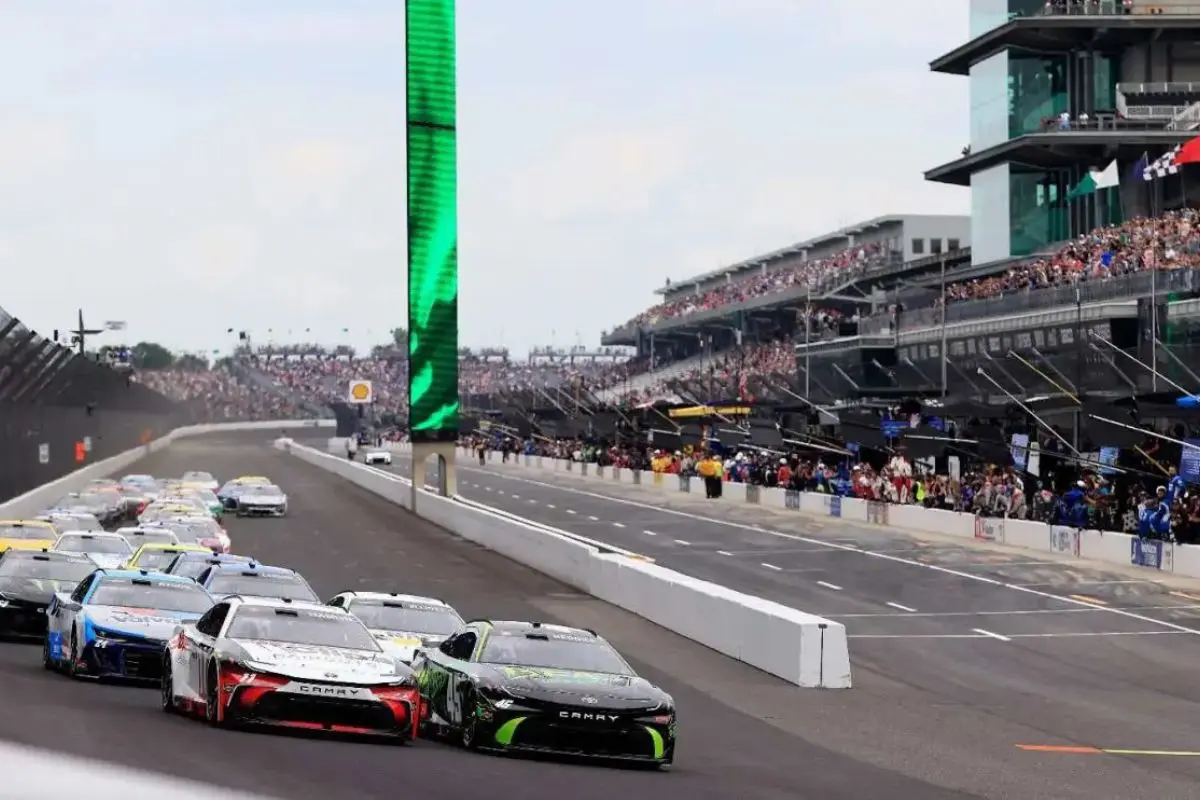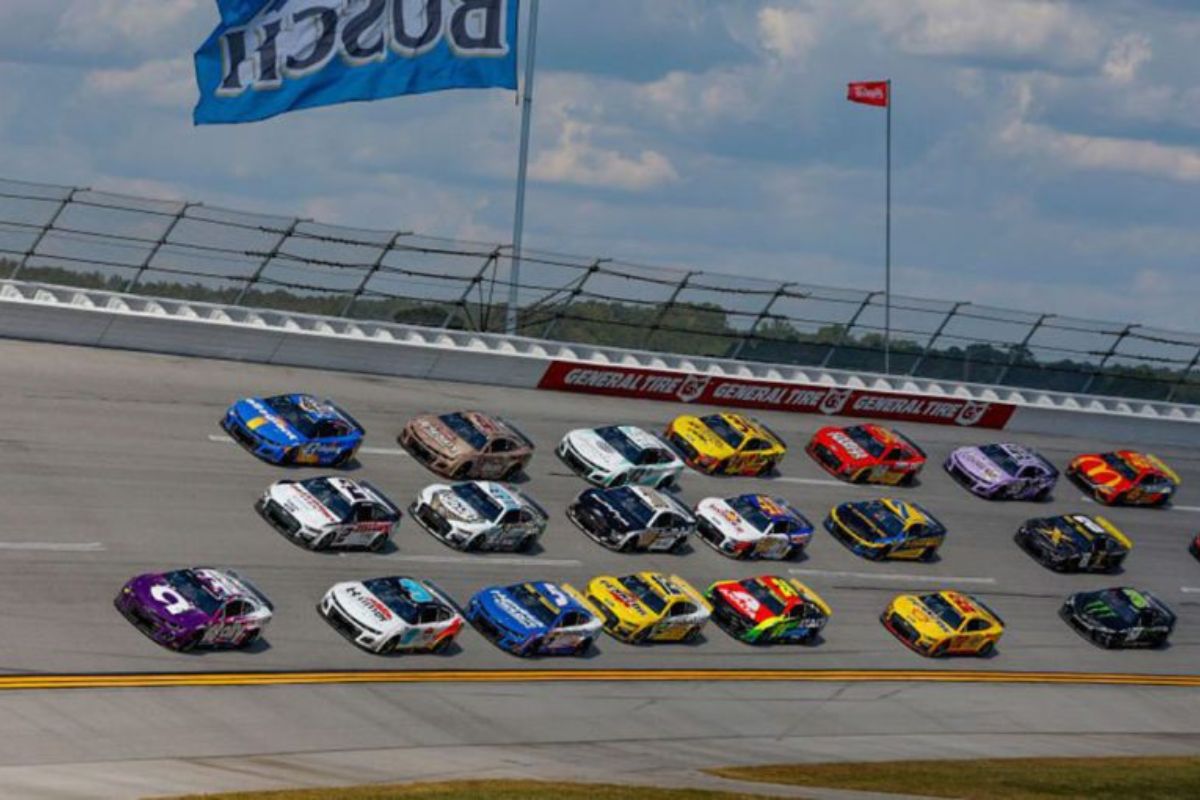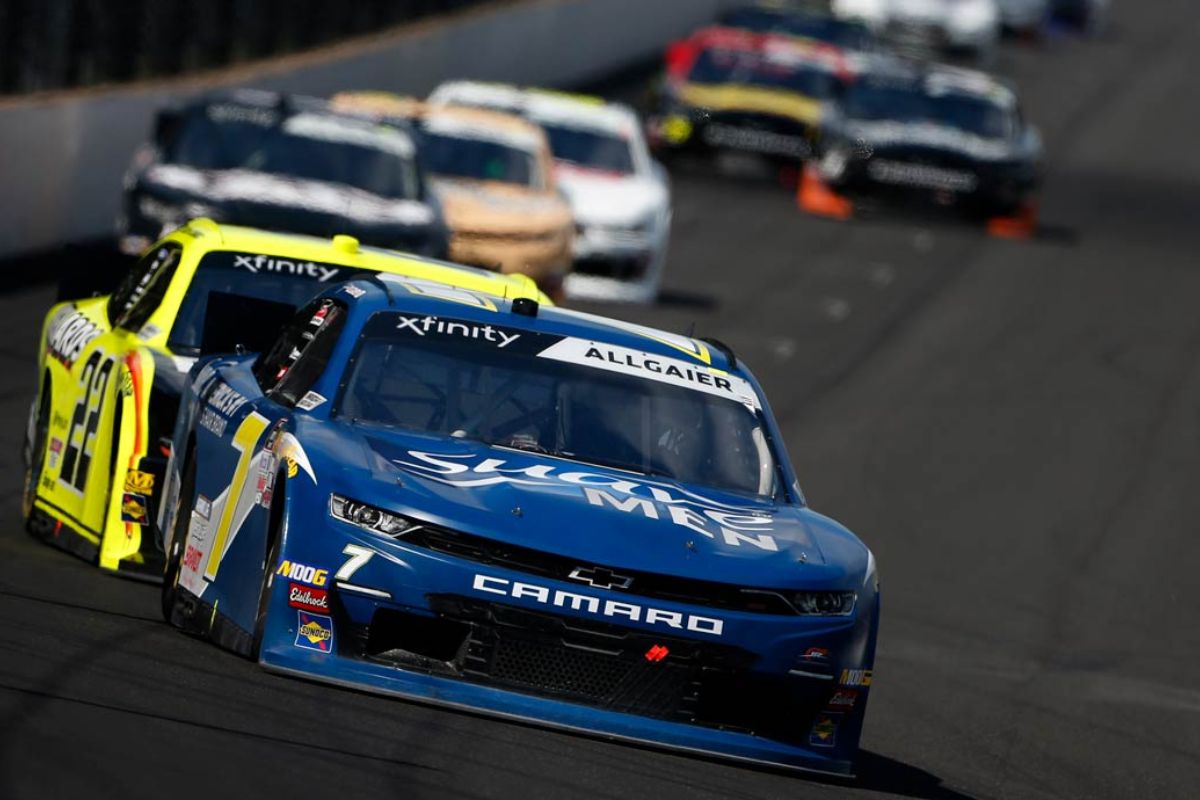Dale Earnhardt Jr. Back to NASCAR: Dale Earnhardt Jr.‘s recent appearance at Bristol serves as a compelling case study of a driver balancing competitive instincts with the realities of a broadcasting career. His seventh-place finish, achieved under challenging conditions, not only shows his skill but also raises intriguing questions about his future in racing. As the landscape of NASCAR evolves, the emotional pull of iconic venues and the legacy of a storied career may influence his decisions. Could this performance signal a shift back to full-time racing aspirations in 2025, or will broadcast commitments continue to shape his path?
Key Highlights
- Dale Earnhardt Jr. faced communication and penalty challenges during the Bristol race, showcasing his adaptability and resilience as a driver.
- Despite a focus on broadcasting with Amazon Prime Video, emotional ties to racing may influence his potential return to NASCAR in 2025.
- Earnhardt’s consistent participation in the Xfinity Series reflects his ongoing passion for racing and connection with fans and younger drivers.
- His recent Bristol performance shows the competitive spirit that continues to drive him, even as he balances broadcasting priorities.
- Future decisions regarding racing will depend on physical readiness, sponsorship opportunities, and the evolving NASCAR landscape post-2025.
Bristol Performance and Setbacks
While many would expect a seasoned driver like Dale Earnhardt Jr. to navigate the challenges of Bristol Motor Speedway with ease, his recent performance highlighted the unpredictability of racing. Competing at the revered 0.533-mile oval, Earnhardt encountered a series of setbacks that tested his expertise and resilience.
Driving the opening 50 laps without radio communication is an intimidating challenge that amplifies the stakes, as drivers rely on real-time feedback from their teams for strategy and situational awareness.
Moreover, incurring a speeding penalty on pit road added to the array of difficulties faced by the veteran driver. Such penalties not only disrupt the rhythm of a race but can also have cascading effects on a driver’s positioning and strategy.
Despite these adversities, Earnhardt Jr. displayed his innate talent and experience by clinching a commendable seventh-place finish, demonstrating that even in tumultuous circumstances, a driver’s skill can shine through.
This performance serves as a reminder that racing is inherently fraught with unpredictability, where even the most seasoned professionals can find themselves grappling with unforeseen challenges.
Potential Change of Heart for 2025
Could Dale Earnhardt Jr. be reconsidering his decision to step away from the track in 2025? Recent indications suggest a subtle shift in his stance regarding a potential return to NASCAR.
Initially, Earnhardt Jr. firmly stated that he would not compete at the Bristol Motor Speedway next year, prioritizing his broadcasting role with Amazon Prime Video. However, even amidst this commitment, he appears to be leaving the door slightly ajar for a comeback.
This evolving narrative raises intriguing questions about Earnhardt Jr.’s motivations and the dynamics of his involvement in the sport. It is not uncommon for retired drivers to experience a strong pull back to the track, particularly in iconic venues like Bristol, known for its rich history and competitive atmosphere.
Earnhardt Jr.’s deep-seated connection to racing and his legacy within the sport may contribute to this reconsideration. Moreover, the intersection of his broadcasting career and racing experience could provide him with unique insights that improve his performance, should he choose to return.
The prospect of re-engaging with fans and rekindling the adrenaline of competition may be compelling factors influencing his potential change of heart.
As 2025 approaches, the decision will hinge on multiple elements, including physical readiness, competitive opportunities, and the broader landscape of NASCAR.
Tradition of Xfinity Appearances
Dale Earnhardt Jr. has accepted a tradition of participating in the Xfinity Series that highlights his enduring passion for racing, even after stepping away from full-time competition in 2017. This practice, firmly established over 27 years, emphasizes his commitment to the sport and serves as a bridge between his illustrious past and the present landscape of NASCAR.
Each season, he has made a point to compete in at least one race, particularly piloting the No. 88 Chevy at numerous iconic tracks, including Richmond, Darlington, Martinsville, Homestead, and Bristol.
The allure of the Xfinity Series for Earnhardt Jr. lies not only in its competitive spirit but also in the joy of racing itself. His top-five finishes in his last eight appearances reveal that while these races are framed as celebratory, his competitive drive remains unweakened.
Such performances suggest that even in a part-time capacity, he retains the ability to contend at a high level, a confirmation of his skill and experience.
Moreover, these appearances allow him to engage with fans and the next generation of drivers, reinforcing the interconnectedness of NASCAR’s community.
While Junior’s motivations may include enjoyment and nostalgia, the prospect of returning to Victory Lane certainly fuels his participation.
Future Uncertainty and Team Changes
As Dale Earnhardt Jr. approaches his 50th birthday, the future of his racing career remains shrouded in uncertainty, particularly regarding his participation in the Xfinity Series. Traditionally a fixture in the series, his recent performance at Bristol has reignited discussions about his potential return for the 2025 season, a prospect he had previously dismissed.
We had a lot of fun watching you out there, @DaleJr. pic.twitter.com/TWln1j0aaQ
— NASCAR Xfinity (@NASCAR_Xfinity) September 21, 2024
This shift in mindset reflects the complexity of balancing competitive aspirations with evolving professional commitments.
In a frank post-race interview, Earnhardt Jr. acknowledged the importance of focusing on his broadcasting career, emphasizing the need to cultivate partnerships and improve his performance in the booth. He stated, “I gotta work on my broadcasts and new partners and all that, so I want to be great.”
“Next year they said we’ll do the races, you don’t need to run. I said, ‘Man, I just might’. I gotta work on my broadcasts and new partners and all that, so I want to be great. I feel like I need to really focus on that. That’s priority. I want to do well in the booth and maybe I will get back in this thing.”-(DALE JR.)
This declaration indicates a calculated pivot, suggesting that while his passion for racing remains, the demands of his media role may take precedence.
Moreover, any decision to participate in the Xfinity Series will likely hinge on team dynamics and sponsorship arrangements. The landscape of motorsports is constantly shifting, and the availability of competitive equipment often dictates a driver’s options.
Earnhardt Jr.’s future in racing will not only depend on his personal ambitions but also on the broader context of team changes and the influence of financial backers.
Legacy and Competitive Spirit
The narrative surrounding Dale Earnhardt Jr. is not merely one of past accolades but also of an enduring competitive spirit that shapes his identity as a driver. As a two-time Xfinity Series champion and a member of the NASCAR Hall of Fame, Earnhardt Jr. stands as a paragon of excellence in the racing world. His legacy, however, is complex; it intertwines with the towering shadow of his father, the legendary Dale Earnhardt Sr. This dual legacy fuels a desire for continued competitiveness that is palpable during his sporadic appearances on the track.
At Bristol Motor Speedway, Earnhardt Jr. illustrated that his competitive fire remains unextinguished, achieving a commendable top-ten finish. Yet, this achievement is accompanied by a sober reflection on the realities of aging in a sport characterized by youthful vigor. In a post-race interview, he forthrightly expressed his delight at being competitive but also voiced uncertainty regarding his future in racing—a sentiment that resonates deeply within the context of NASCAR’s evolving landscape.
“I’m thrilled (to) come back here and be competitive. Man, I don’t know how much longer I’ll be able to be competitive. I can come out here for another 20 years, but eventually, these young kids will be so good.”-(DALE JR.)
His acknowledgment of the rising talent highlights a critical aspect of his competitive spirit: a recognition of the relentless progression of the sport. Ultimately, Earnhardt Jr.’s legacy is not solely defined by his past accomplishments but also by his resolve to face the challenges of competition head-on.
As he considers the path of his career, his competitive spirit remains a reflection of the enduring allure of racing—a passion that transcends time and generational shifts.
News in Brief: Dale Earnhardt Jr. Back to NASCAR
Dale Earnhardt Jr.’s recent performance at Bristol serves as a demonstration of the enduring allure of competitive racing, even when juxtaposed with broadcasting responsibilities. The challenges faced, including a lack of radio communication and a speeding penalty, highlight the unpredictable nature of motorsport. As discussions regarding a potential return to NASCAR in 2025 gain traction, the emotional ties to racing and iconic venues may ultimately influence future decisions, reinforcing Earnhardt’s legacy within the sport.
ALSO READ: Dale Earnhardt Jr. Returns to NASCAR Racing, Admits Feeling Nervous



